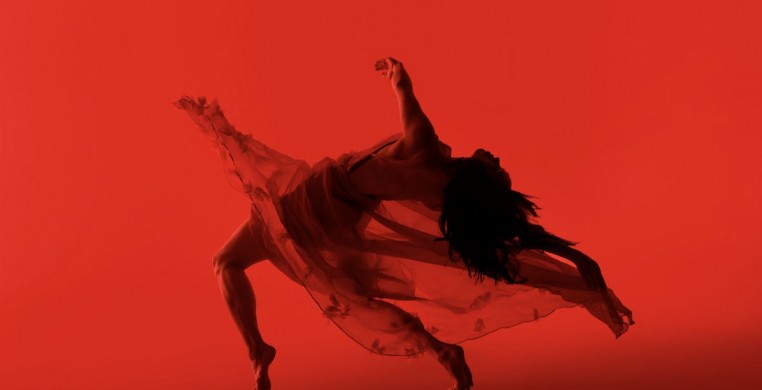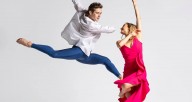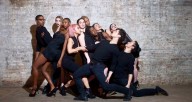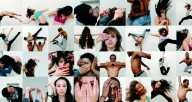For the past 29 years, Dance for Life has been, hands-down, my favorite Chicago dance event, but this year, it is especially so. Not only is the annual gala fundraiser a stellar public showcase for Chicago Dancers United, the not-for-profit parent organization that provides financial aid and health care support for dance industry professionals experiencing health crises or in need of general health care. It also provides a unique opportunity for the entire Chicago dance community to come together artistically and in collective service of the art of dance.
While Dance for Life (celebrating its 30th anniversary this summer) began as a response to the AIDS crisis, it has broadened its scope to include all health-related needs. A testimonial to the organization’s success, Dance for Life shines a beacon across America as a unique model for community service in the arts.
This year, Dance for Life gives new meaning to its title, as the entire dance community emerges from a different crisis. The COVID pandemic shut down our theaters, closed studios, and isolated our dancers from each other, their audiences, their collaborators, and in some cases from dancing all together. COVID-19 threatened to silence their voices and break their spirits. Some found creative virtual alternatives with varying degrees of success, while others experienced a creative void, langur and even depression.
For most of the Chicago dance community, this year’s Dance for Life, which takes place Thursday in the outdoor Pritzker Pavillion at Millennium Park, marks the official re-entry to in-person performing on a stage in front of a live audience. The performance is free and open to the public.
“I’m super excited about this year’s Dance for Life,” said Chicago Dancers United board member Julie Kaplan in a recent phone interview. After the intense impact of isolation due to the pandemic, Kaplan said, “There’s a common goal of wanting to move people emotionally and to connect people to each other.” This year’s roster of performing companies reflects increased diversity and includes four companies that have never appeared in “Dance for Life” before.
“Each company’s submission was wanting to express shared humanity and some kind of empowerment,” Kaplan said. She also cited how this year is unique, with more female choreographers and directors, more choreographers of color and more diversity in leadership. “There’s definitely been a shift,” she said. “We all need this, as audience and as dancers!” She called this year’s finale, annually choreographed for dancers from each of the participating companies and independent artists by Randy Duncan, “especially poignant. (It) really brings us together!”
The companies participating in Dance for Life for the first time this year include South Chicago Dance Theatre, Movement Revolution Dance Crew, and Para.Mar Dance Theatre.
Kia Smith, artistic founder/director of South Chicago Dance Theatre submitted a five-minute excerpt from the “I Have a Dream” Martin Luther King speech, featured in the company’s Black History Month show last February. To her surprise, Chicago Dancers United asked her to develop it into a full-length piece, which has resulted in “Architect of a Dream,” with music by Solomon Ilori. “We’re a brand-new company,” Smith said in a recent phone interview, “celebrating our fifth anniversary season.”
Monternez Rezell, founding director of Movement Revolution Dance Crew, is honored for his company to be the first hip-hop ensemble to perform in Dance for Life. The company will perform his piece, “Dedicated to the Originators,” which he said is “a tribute, a dedication, and a look back to the young Black people who created the culture of hip-hop.” Set to music by Tech N9ne and Afrika Bambaataa, the piece harkens back to the birth of hip-hop on Aug.11, 1973, when the godfather of hip-hop, DJ Kool Herc, invented a new technique for creating a continuous rhythmic beat—isolating the solo drum “breaks” from multiple recordings—and stringing them together in a continuous flow. In this way, he could get people dancing. He called it “The Merry-Go-Round” technique. What is now known as “the break beat” was born on that day, and gave its name, “break dancing,” to the movement it inspired.
Para.Mar Dance Theatre artistic director Stephanie Martinez called her new company’s inaugural appearance in Dance for Life a “full-circle moment.” Martinez, who danced with several Chicago companies, including River North from 1989-2004, was a performer in Dance for Life years ago. Being an artist in the show, she said, gave you a sense of being a part of something bigger than your own company. Chatting by phone recently, Martinez expressed her gratitude for the “the opportunity to introduce ourselves and to be embraced by the Chicago dance community.” The company will perform an excerpt from Martinez’s “Kiss” (2020), set to Bach’s “Air on the G-String.” She wanted to offer something light that would impart a sense of calm and help audiences identify with their own private moments when they are alone. “The stillness, its simplistic quality, gives the audience time to inhale and exhale, like a palette cleanser,” she said. “But it takes a turn and suddenly gets very still as it looks into loneliness.”
Veteran companies returning to Dance for Life are the core group of The Joffrey Ballet, Giordano Dance Chicago and Hubbard Street Dance Chicago, along with Trinity Irish Dance Company, Visceral Dance Chicago, Duncan’s finale and a film by Winifred Haun and Dancers. Julie Nakagawa’s DanceWorks Chicago, also returns to this year’s gala, performing the Chicago premiere of Charissa-Lee Barton’s "Mutter Matters," which explores how physical expression can sometimes be a more direct, playful and meaningful form of communication, whether or not we are six feet apart. The work is set to music performed by the Oscar Peterson Trio and composed by Count Basie, Duke Ellington and Clark Terry, who joins the Trio for this piece.
See Chicago Dance spoke with Nan Giordano, artistic director of Giordano Dance Chicago, the only company that has performed in Dance for Life for all 30 years. For GDC's return to live performance, Joshua Blake Carter has reconfigured his 2018 classic American jazz piece, “Take A Gambol,” originally choreographed for eight men, for the entire GDC ensemble of 13 men and women.
“This is a company milestone,” Giordano said about coming back to the stage as one of the longest-running original American jazz dance companies. “For all the struggle we’ve had as independent companies, what a great way to start (back to live performances). The community feel will be somewhat diminished due to COVID restrictions, she lamented. And the sense of unity will be necessarily diminished. There will be no company class, no viewing of each other’s performances from the wings and no gala dinner or post-show reception. Dancers will be restricted to their separate dressing rooms when not on stage and masks must be worn at all times backstage. But the excitement of returning to Dance for Life outweighs any necessary measures.
--
Dance for Life takes place Thursday at the Jay Pritzker Pavilion in Millennium Park, 201 E. Randolph Street. Lawn seating is free with tickets seats available in the pavilion. For more information click the event link below or visit www.chicagodancersunited.org.






